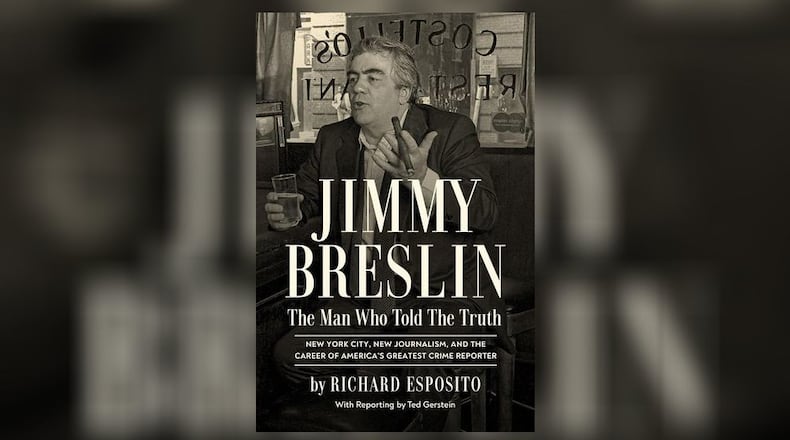He covered some big stories and found unique ways to approach them. His columns were populated by colorful recurring characters. One fellow was an arsonist. Another was a lawyer who ended up getting involved in a major scandal involving corruption and bribery.
Some readers assumed Breslin created those characters, how could they be real? One such doubter was an editor at the New York Times. One evening he turned up at one of the saloons the hard drinking Breslin was known to frequent. He walked in and was astonished to discover these supposedly imaginary people existed. A few of them were leaning on the bar.
Breslin’s writing style brought his readers inside the stories and in some instances Breslin got dragged into them too. When a serial killer known as the Son of Sam was terrorizing New York Breslin covered it. Then the killer began directly communicating with Breslin.
As a columnist, I was intrigued by the author’s analysis of Breslin’s writing style. Short sentences. Words no longer than three syllables. The author, Richard Esposito, was one of Breslin’s newspaper editors. Esposito had to deal with him during an unfortunate situation when Breslin’s behavior seemed odd. It turned out Breslin was dealing with a brain tumor.
Esposito considers Breslin’s psyche, how he dealt with what he considered to be betrayals. The father who left the family when he was a boy. The beloved wife who took care of Breslin then died young. His daughters who also died before their time. One abandonment after another.
Breslin’s ego was as enormous as the territory he covered. His reporting on the assassinations of John F. Kennedy and a few years later, Bobby Kennedy, were some of the greatest newspaper pieces ever. When he heard John Lennon had been shot he rushed to the scene. More incredible coverage followed as he filed his story within hours of that tragedy.
He wrote many books and made a pile of money. But there was never enough of that. I did a radio interview with Breslin for his final book, a biography of Branch Rickey, the man who ultimately broke the color line in baseball with the Brooklyn Dodgers’ signing of Jacky Robinson. Breslin was then in his early 80s. I tried to chat him up before we began taping. He didn’t like that at all, blustering: “if you don’t stop being nice to me I’m going to hang up the phone.”
That guy was ornery. Also a one of a kind journalistic genius.
Vick Mickunas of Yellow Springs interviews authors every Saturday at 7 a.m. and on Sundays at 10:30 a.m. on WYSO-FM (91.3). For more information, visit www.wyso.org/programs/book-nook. Contact him at vick@vickmickunas.com.
Credit: Contributed
Credit: Contributed
About the Author


